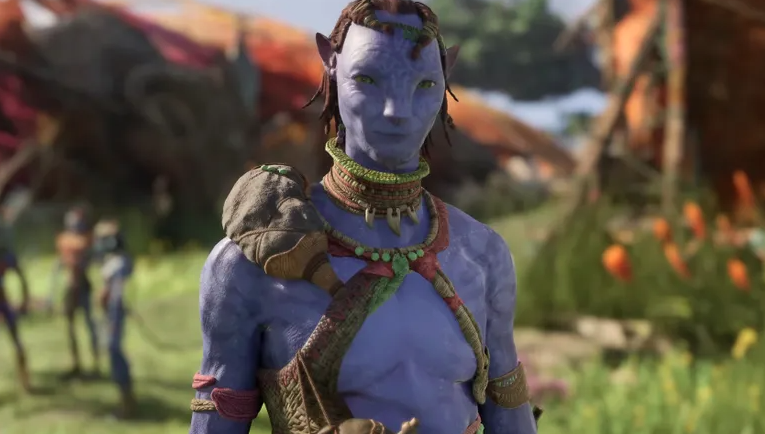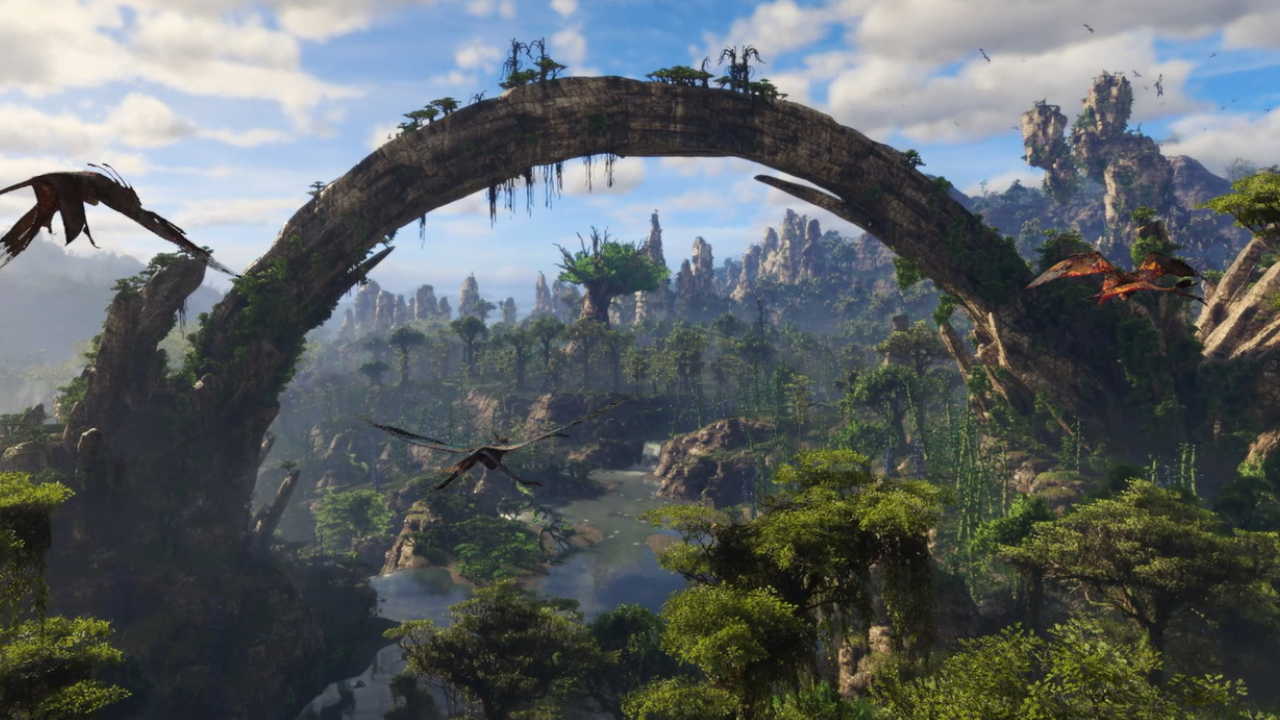Avatar: Frontiers Of Pandora - A Lush Yet Lackluster Journey

In the aftermath of engaging with the open-world action-adventure game Avatar: Frontiers Of Pandora, the inclination shifted towards a desire for a swifter mode of transportation, such as a jeep or a jet. The expansive jungles and plains, while visually captivating, proved to be excessively vast, laden with mundane tasks, and heavily reliant on level-gating to convey a semblance of progress. Despite occasional spectacles involving narrow escapes from hostile humans and their ecosystem-altering factories, the preference transitioned from a bow to a shotgun equipped with extended mags and a muzzle brake.

The game's premise caters to those unfamiliar with the film series, casting players as a Na'vi, a tall blue entity, raised as a human by the RDA military force led by the commanding figure, John Mercer. After a minor rebellion, escape from RDA confinement is followed by a 15-year cryosleep. The cruel irony manifests upon awakening, with the RDA having strengthened, posing a renewed threat to the cherished lands.
Mercer's army establishes camps and factories, emitting smoke and not only advancing colonization efforts but also corrupting the surrounding forest. The task at hand involves locating Na'vi clans across Pandora, earning their trust, and uniting them against Mercer. Combining bows, spear-throwers, or guns, players engage in assaults with stealthy approaches or direct confrontations against Mercer's soldiers and mechs.
Beyond the environmental degradation brought about by Mercer's actions, Pandora emerges as a visual marvel. The jungle, particularly noteworthy, stands out as one of the most intricately detailed game environments, characterized by the diffusion of light through canopies, the organic retraction of bright fronds upon approach, and the overall density of flora, providing an immersive sense of place. However, the initial awe transforms into weariness as the expansive nature of the environment becomes a recurrent theme.
The first frustration arises from the challenge of navigating the extensive map. Guided mode, featuring quest markers on a minimally zoomable map, complicates locating individuals in crowded bases. Even in the jungle, reliance on Na'vi scan-o-vision becomes frequent, tracking the glowy blue outlines of objectives before their disappearance necessitates reactivation. Exploration mode, eliminating markers, relies on environmental clues, introducing an additional layer of difficulty.
The second frustration stems from the prolonged travel required. Frontiers Of Pandora necessitates extensive sprints early on, seemingly aimed at acquainting players with basic world interactions such as parkour, fruit harvesting, and wildlife hunting. While these tasks serve their intended purpose, the monotony of traversing jungles and plains persists. The acquisition of an Ikran (lizard bird) provides relief, facilitating faster travel through the skies. However, even its wings fall short of the desired speed. Personally, a preference is expressed for a jeep or the option to pilot an RDA fighter jet for a more expeditious experience.
The gameplay adheres to Ubisoft's familiar formula, evident in titles such as Far Cry and Assassin's Creed. Avatar's Pandora presents an excessively vast map governed by a simplistic algorithm, mandating players to level up by upgrading gear. The progression of the main quest dictates an escalating recommended level, compelling players to undertake side quests for enhanced equipment and clan favor. Discoveries, rather than constituting genuine exploration, function as checkboxes for skill points.
The immersive moments spent interacting with Pandora's clans are diluted by formulaic tasks. Learning about their culture often involves repetitive runs between mountain flutes, the collection of alien pineapples, or interaction with a handful of blue characters before culminating in a frustrating investigation. The investigation mechanics, requiring the linking of clues by interacting with objects, often suffer from objects blending into the environment. Following a scent for extended periods only to find the person thousands of miles away diminishes the immersive experience.
Main missions tend to culminate in attacks on RDA strongholds, larger versions of standard bases with additional numerical objectives. The game struggles to decide between a stealth or FPS approach, resulting in an inconsistent experience. The AI's unpredictable response to actions like shooting an arrow from a bush adds to the frustration. While occasionally rewarded for strategic approaches, the game often favors assault rifles or shotguns due to enemy AI shortcomings.
As bases are liberated, and plant life is restored, the narrative inevitably circles back to the RDA, highlighting the story's limitations. Avatar's plot struggles to transcend the simplistic narrative of "The sky people, back at it with their fossil fuels," making story beats predictable.
In conclusion, the experience with Avatar: Frontiers Of Pandora began with admiration for its stunning map, engaging parkour, and a mix of shooting and looting. However, as the Ubisoft formula took hold, excitement plateaued, and every action became predictable, reducing discoveries to mere tallies. A change in pace, perhaps with the introduction of a jeep or the option to call in an airstrike, might have altered the perspective.
Evaluation of Hyper-Casual Remake Viability
Considering the challenges faced by Avatar: Frontiers Of Pandora, the prospect of a hyper-casual remake raises questions. The core issues, including formulaic gameplay and a narrative plateau, might persist despite a shift in style. The game's inherent design flaws need addressing before contemplating a remake, ensuring that the revamped version aligns with player expectations. Whether transforming Avatar into a hyper-casual experience would make sense depends on a thorough evaluation of its foundation, aiming for a more enjoyable and satisfying gaming experience.